Glazed Expression
Brand story by Giovanna Dunmall
Casalgrande (RE), Italy
16.11.15
It’s ten years and counting for DesignTaleStudio, high-end Italian tile manufacturer CERAMICHE REFIN’s in-house research lab, which continues to push the boundaries of what’s technically and aesthetically possible in ceramics through its bold collaborations.
Alessandro and Francesco Mendini’s Filo collectionwas also launched in 2014. Both geometric and abstract, Filo comes in four colours and different patterns featuring thin zig-zagging lines that create the illusion of depth
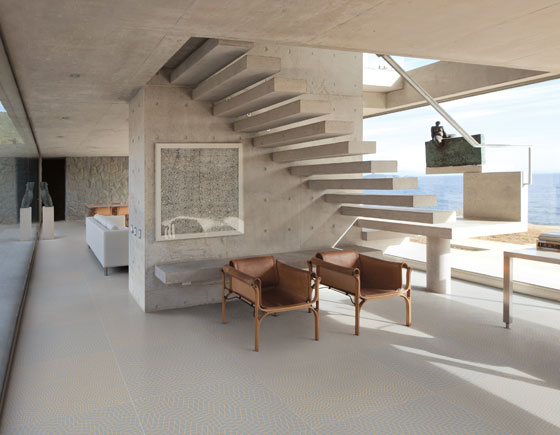
Alessandro and Francesco Mendini’s Filo collectionwas also launched in 2014. Both geometric and abstract, Filo comes in four colours and different patterns featuring thin zig-zagging lines that create the illusion of depth
בWhen you said the name Refin to an architect ten years ago, it was unusual for them to know who we were,’ says Paolo Cesana, Marketing Director at leading Italian tile manufacturer Ceramiche Refin. ‘These days it is very unusual for them not to know who we are.’
This shift in visibility and image is no accident. It has come about as the result of an enlightened marketing strategy and the founding of an in-house research laboratory in 2005. The idea behind DesignTaleStudio (or DTS for short), as the lab is known, was two-fold says Cesana. ‘On the one hand it was a bid to change our image and engage with architects and specifiers; on the other it was a desire to create a high-quality brand within Refin that could carry out advanced research into ceramics.’
This year DTS launched Labyrinth. Designed by Italian designer Giulio Iacchetti and inspired by the mesmerizing graphic constructs of Dutch artist Escher, the range continues to push the boundaries of what ceramics can do
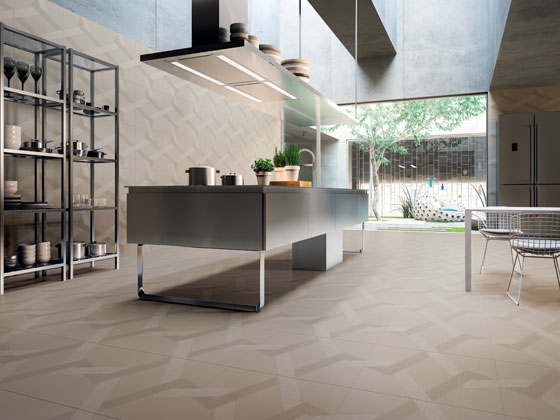
This year DTS launched Labyrinth. Designed by Italian designer Giulio Iacchetti and inspired by the mesmerizing graphic constructs of Dutch artist Escher, the range continues to push the boundaries of what ceramics can do
×DTS allows Refin to experiment with unconventional production and decoration techniques unfettered by the constraints of its more commercial product lines, where affordable price points and large production runs aimed squarely at the mass market consumer are paramount. ‘The beauty of DTS is that we can invent new things and have the time to think and try things out,’ says Cesana. ‘DTS is where we invest and experiment in innovation.’ In the same way that many car manufacturers have Formula1 racing teams, it’s about pushing the boundaries of what a product or material can do.
DTS, which is made up of in-house members from Refin’s marketing and research departments and a regular roster of external collaborators, was initially focused on rediscovering and exalting the value of hand-crafted ceramics. One of its first launches was Prototipi d’Autore (loosely translatable as ‘artist’s creations’), a series of decorated ceramic plates created by such designers and architects as Alessandro Mendini and Mario Bellini, but also by personalities from the world of music, art and fashion, such as Vivienne Westwood, Elio Fiorucci and Lucio Dalla.
Kasia Zareba’s Fossil collection for DTS featured hand-drawn patterns inspired by the prehistoric marks left in rocks by plants and animals, in particular extinct sea creatures called ammonites

Kasia Zareba’s Fossil collection for DTS featured hand-drawn patterns inspired by the prehistoric marks left in rocks by plants and animals, in particular extinct sea creatures called ammonites
×Polish designer Kasia Zareba won the DTS-initiated ‘Create Your Tile’ competition in 2014. Judges Alessandro and Francesco Mendini and Refin Marketing Director Paolo Cesana are pictured here with Zareba
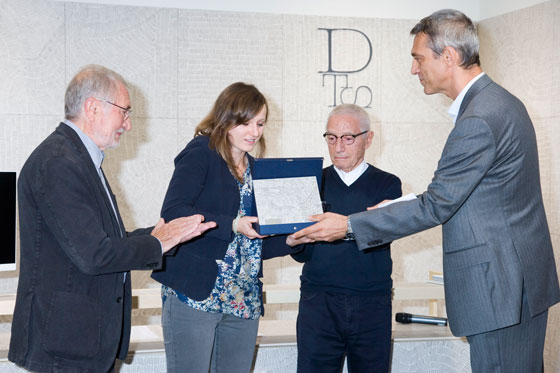
Polish designer Kasia Zareba won the DTS-initiated ‘Create Your Tile’ competition in 2014. Judges Alessandro and Francesco Mendini and Refin Marketing Director Paolo Cesana are pictured here with Zareba
×These soon morphed into the less celebrity-led Pareti d’Autore, 60 x 120 cm slabs that were part artwork and part exemplar of ceramic craftsmanship, which could be hung on any surface alone or combined with other harmonious or clashing designs. Here, the designers experimented with finishes and materials using metals (such as gold, copper, cobalt) and quartz-based ceramic glazes to create vivid colours and light effects. A thinner and more minimal version of these slabs was also created with pigments, glass grits and glazes applied by hand that created alluringly tactile surfaces.
In 2012, DTS went in a different direction with a collection called Frame. It marked an important and key transition in Cesana’s view. ‘We moved from more traditional ceramic materials and complex artisanal production methods that kept costs high and limited us to very small production runs,’ he explains, ‘to focusing on what could be done with porcelain. We wanted to rediscover and reevaluate the heritage of majolica tiles but in a modern and innovative way using digital decoration techniques.’
Frame makes full use of innovative digital printing techniques and marked a return to colour and decoration in tiles. Milan-based Studio FM designed the collection with DTS. Pictured here is the Majolica pattern
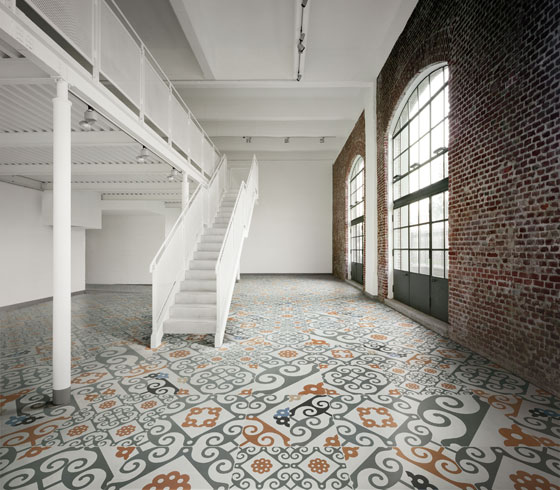
Frame makes full use of innovative digital printing techniques and marked a return to colour and decoration in tiles. Milan-based Studio FM designed the collection with DTS. Pictured here is the Majolica pattern
×Frame was a collection of highly graphic and contemporary tiles based on the traditional clay majolica tile. The idea was that tile patterns could be used singly or mixed together to create highly original compositions and textures. The designs, which are inspired by everything from the Bauhaus and Anni Albers to the Japanese Shibori textile tradition, were created in collaboration with Milan-based graphic designers Studio FM.
Cesana believes working with external collaborators and designers is essential to the DTS ethos: ‘If we remained a closed group, there wouldn’t be the same level of creativity. We want there to be a constant exchange of ideas.’ And the exchange of ideas isn’t confined to the designs or concepts behind the tile collections either. Often the knowledge accrued as a result of the more experimental work done by DTS passes through to Refin’s mainstream product lines. So when the use of digital printing technology to create innovative patterns was explored for the Frame collection for instance, the same techniques were then applied to some of Refin’s more commercial tile ranges.
Italian designer Massimiliano Adami has collaborated with DTS several times. His Terraviva collection was launched in 2010
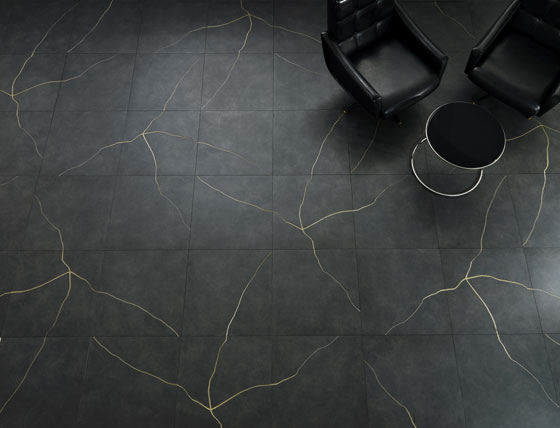
Italian designer Massimiliano Adami has collaborated with DTS several times. His Terraviva collection was launched in 2010
בSometimes DTS collaborations also translate into an actual Refin product,’ continues Cesana. ‘For instance we worked with designers Massimiliano Adami and Luca Nichetto on an installation outside the Triennale during the Milan furniture fair in 2010 and their designs became two product ranges – Terraviva and Kaos.’ Terraviva, which is still in production, features a crack on the tile that conveys a sense of the passing of time and pays tribute to the earthenware origins of the material, while Kaos, no longer in production, had three-dimensional reliefs and textures, and referenced the seemingly random (but actually highly ordered) arrangement of molecules.
More recently – in 2014 – DTS ran a competition asking designers to come up with boundary-pushing tile designs. This resulted in two new collections; young Polish designer Kasia Zareba’s Fossil range inspired by the prehistoric imprints left in rock formations (selected out of over 840 projects sent from around the world) and a collection called FILO by competition judges and design icons Alessandro and Francesco Mendini. ‘The huge response we got was proof that ceramics as a material really interests designers and architects,’ says Cesana. ‘This hasn’t always been a given. With the advent of porcelain stoneware, many had lost interest, believing it to be a material that merely pretended to be another. Now specifiers and architects realise that porcelain is a material in its own right, one with its own characteristics and dignity.’
In the first few years of its existence DTS worked with personalities from the world of architecture, design, art and fashion to create unique ceramic art panels called Prototipi d’Autore
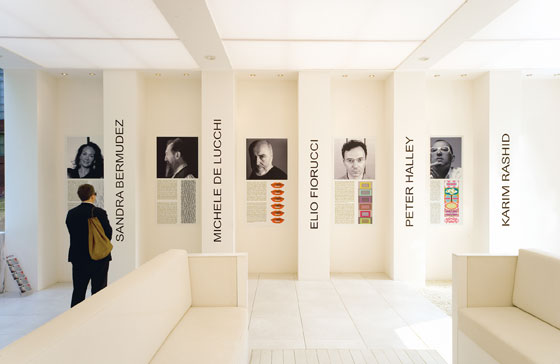
In the first few years of its existence DTS worked with personalities from the world of architecture, design, art and fashion to create unique ceramic art panels called Prototipi d’Autore
×This year DTS wanted to explore yet another facet of porcelain and charged designer Giulio Iacchetti with creating a collection of floor tiles that went beyond two-dimensionality. ‘3D is an aspect of digital technology that has only really been used to mimic natural products such as wood rather than to create something new,’ says Cesana. Iacchetti’s designs resulted in a collection called Labyrinth that is based on seemingly infinite patterns and inspired by the mesmerising graphic constructions of Dutch artist MC Escher. The tiles are modular, so the customer becomes an active participant in creating his or her own unique labyrinth.
Though Labyrinth is more of a conceptual rather than actual interpretation of three-dimensionality, Cesana says that in the future DTS will continue to examine this concept in a visual and physical sense also. There is no rush, however. As the ‘tale’ in its name suggests, DTS is about the story, the narrative; it’s about combining industrial manufacturing processes with craftsmanship and creativity and taking one’s time. Here’s to the next ten years of exploring just what ceramics can do.
Refin’s HQ in the Sassuolo Ceramic District of northern Italy features a museum space with a display of the raw materials necessary to create the ceramic products it sells under the Refin and DTS (DesignTaleStudio) brands
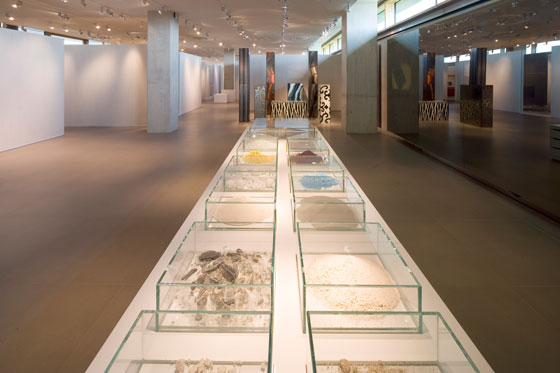
Refin’s HQ in the Sassuolo Ceramic District of northern Italy features a museum space with a display of the raw materials necessary to create the ceramic products it sells under the Refin and DTS (DesignTaleStudio) brands
×---








